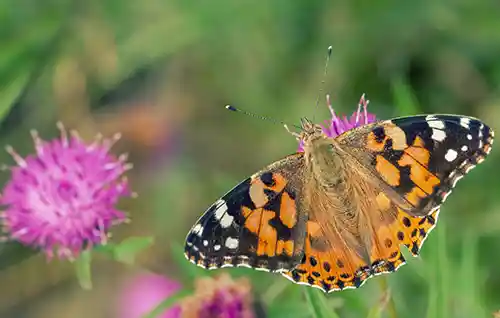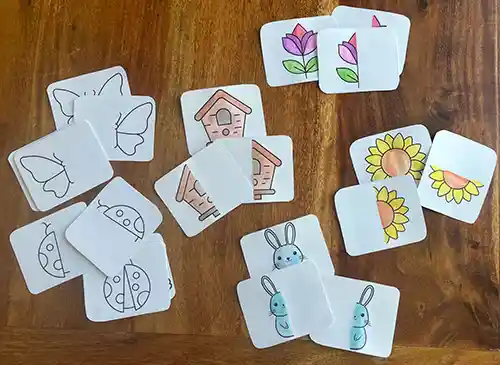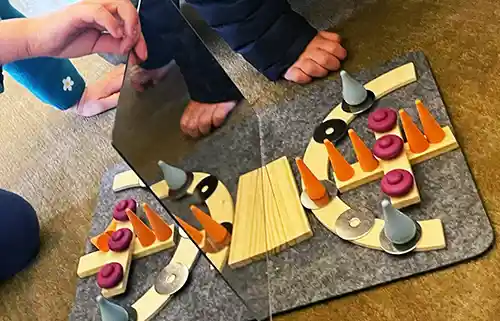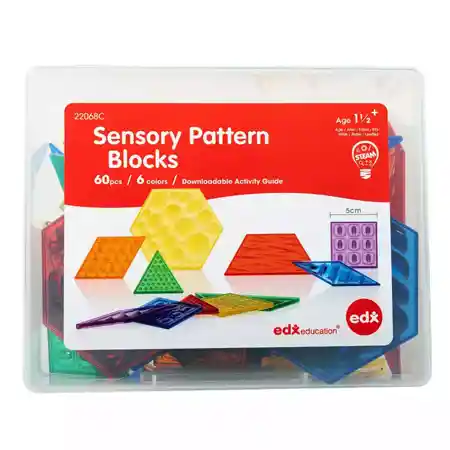Regular Price $96.49
Your Price $86.84
Springtime Symmetry

Math and nature combine with fun memory games, matching challenges and curiosity-sparking conversations! Download our Springtime Symmetry Cards and follow the directions for a variety of games. Then take your conversation outdoors to observe symmetry in nature as you look for patterns and balance in the world around you!
Ages/Grades:
Toddler (with supervision & support)
Preschool
Early Elementary
Learning Domains:
- • Math
- • Cognitive Development
- • Fine Motor Skills
- • Language & Communication
- • Science & Nature
Materials:
- • Spring Symmetry Cards Download
- • Crayons, markers, or other materials to color the cards
- • Mirror, blocks, or other loose parts for extensions (optional)
Preparation
- • Print and cut out the symmetry cards onto sturdy paper or cardstock.
- • Color with crayons or markers, if desired.
- • Sort cards into two piles: whole images and their matching halves.
- • Laminate for durability (optional).

Ready, Set, Play!
![]() Game 1: Spring Symmetry Memory
Game 1: Spring Symmetry Memory
- • Lay all cards face-down in a grid.
- • Take turns flipping two cards to find a symmetrical pair (one half + its matching full image).
- • If a match is found, the player keeps the pair; if not, turn them back over.
- • Work together to match all of the pairs!
![]() Game 2: Symmetry Sorting Challenge
Game 2: Symmetry Sorting Challenge
- • Mix all the cards together and invite children to sort them into two groups: full images and halves.
- • Once sorted, work together to find matching pairs by comparing shapes, patterns, and colors.
- • Challenge children to place halves beside their full image matches to "complete the picture."
![]() Game 3: “Go Match!”
Game 3: “Go Match!”
- • Deal 3–4 cards to each child (adjust based on age and attention span). Place the rest face-down in a “pond” in the middle.
- • Players take turns asking a friend, “Do you have the match for this card?”—showing one of their cards (either a half or a full image).
- • If the other player has the symmetrical match (e.g., the other half of a ladybug, or a matching full image), they give it to the asking player, who sets the pair aside as a match.
- • If not, the responding player says, “Go match!” and the child draws one card from the pond.
- • The game continues until all matches are made. Celebrate everyone's pairs at the end!
Tips
- • Focus on visual language: “Look at the wings—do they match?” or “Is this side the same as the other?”
- • Encourage collaborative play rather than competition: “Let’s help each other find all the matches!”
Engage Children in Conversation
- Let’s look closely—how would you tell someone else what this looks like? Can you describe the shapes, colors, or lines?
- Let’s look at these two cards—how are they alike? How are they different?
- Can you think of something in nature that looks like this?
- Can you think of other objects that have two matching sides?
- Let’s look at your shirt/shoes/leaf. Do you think it has symmetry?
- If we fold this in half, would both sides look the same?
Extensions
- Go on a springtime symmetry walk. Look for butterflies, flowers, and leaves that show symmetry.
- Use a mirror to explore symmetry! Place it against one side of a halved card to "complete" the image.
- Invite children to a “symmetry challenge” with blocks or loose parts. Take turns adding details to make both sides match.
- Create your own symmetrical drawings using folded paper and paint blots or markers.

Modifications
- For toddlers, simplify the activity by starting with only 3–4 pairs.
- Approach games collaboratively – instead of competing, work together to find matches.
- Focus on matching by color or shape before introducing the term symmetry.
Suggested Products
Regular Price $51.09
Your Price $45.98
Regular Price $72.59
Your Price $65.33
New
Regular Price $16.80
Your Price $15.12




